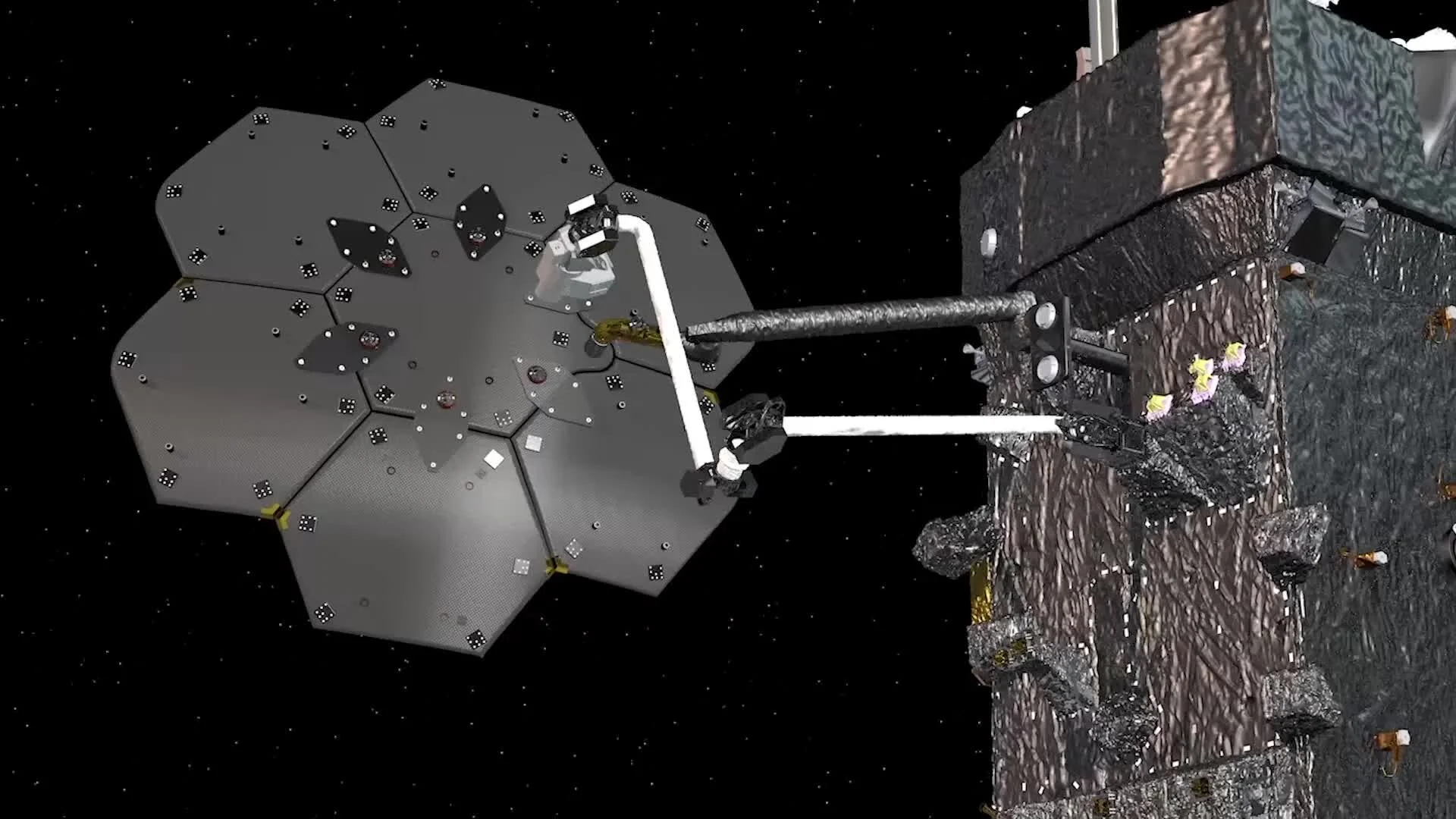Chang’e 4 and Yutu-2 Reveal Moon’s Sub-surface
Moon, with Apollo 17 Lunar Module in the background and explosive package (EP) in the foreground. Source: NASA.
Researchers using data from China’s Chang’e 4 lunar lander and Yutu-2 rover were able to confirm many details of the Moon’s farside subsurface that were previously only theory.
The subsurface of the Moon is still not fully understood, though some study was done of the Apollo 17 landing site on the near-side of the Moon. This included the use of four geophones on the Apollo 17 Lunar Seismic Profiling Experiment (LSPE) to record seismic waves generated by eight explosive packages (EP) placed by Apollo astronauts in 1972. This data was studied to help explain the subsurface, and was even revised many years later, in 2009, using the Lunar Reconnaissance Orbiter (LRO) which made a more accurate map of where the EPs were detonated.
Based on new analysis, distinct stratigraphic layers were identified at 4 meters, 96 meters, and 773 meters below the surface, with signs that the degree of compaction increased with depth. The LSPE also transmitted and received radar waves to study the upper two kilometers of the Moon’s crust. Following the Apollo missions, starting in 2007, the Japan Aerospace eXploration Agency (JAXA) studied several regions of the Moon, including the nearside maria, farside highland, and polar region. This was done using the Lunar Radar Sounder (LRS) instrument aboard the KAGUYA (SELENE) spacecraft, although limited to a resolution of 75 meters and range depth of 5 kilometers.
Yutu-2 route across the farside of the Moon. Source: Phil Stooke.
After landing for the first time on the Moon’s farside, the Chang’e-4 lander deployed the Yutu-2 rover, which utilized a dual-frequency Lunar Penetrating Radar (LPR). The LPR was previously tested on the Chang’e-3, and uses ground penetrating radar at 60 MHz and 500 MHz. The LPR instrument collected data during the first two lunar days of Yutu-2’s journey across the Von Kármán crater. While capable of far less depth than instruments like JAXA’s LRS, the LPR on Yutu-2 has a much finer vertical resolution of about 30 centimeter.
Using the high frequency option, radar data from LPR revealed good signal penetration in the areas Yutu-2 traveled. This greatly exceeded the performance of the Chang’e-3 ground penetrating radar. After combining the radargram, tomographic image, and quantitative analysis, the team produced the first picture of the lunar farside subsurface (image above).
Schematic of Moon subsurface based on LPR observations. Source: Chunlai Li, et al 2020.
This image shows that the layer of surface regolith extends down 12 meters, and is composed mostly of fine materials in a homogenous distribution. Extending below the regolith for the next 12 meters is a layer of somewhat more coarse materials with embedded rocks. Finally, from a depth of 24 meters down to 40 meters is a combination of coarse and fine materials. Below this 40 meter level there is no detectable radar signal, so while there isn’t clear evidence of what is present there, it was concluded that the mare basal layer must be deeper.
Further evidence of a deep mare basal layer is based on analysis of dark halo craters (DHC) and non-DHCs in the landing area. Their ejecta thickness was estimated as greater than 39 meters and up to 78 meters. Since the deepest detectable radar signal was 40 meters, the ejecta blanket is confirmed to be at least this deep but may extend up to 90 meters based on the excavation depth of iron-rich craters.
While the level of regolith compaction and depth of loose material varies across the moon, it is important to understand the subsurface. The use of lunar resources is essential to allow sustainable growth of lunar activity, and knowledge of the local subsurface is necessary to expand the production of sufficient lunar resources. This recent research improves our knowledge of the Moon and demonstrates some of the technologies that will be needed to adequately characterize the Moon’s resources so they can be utilized in the near future.







